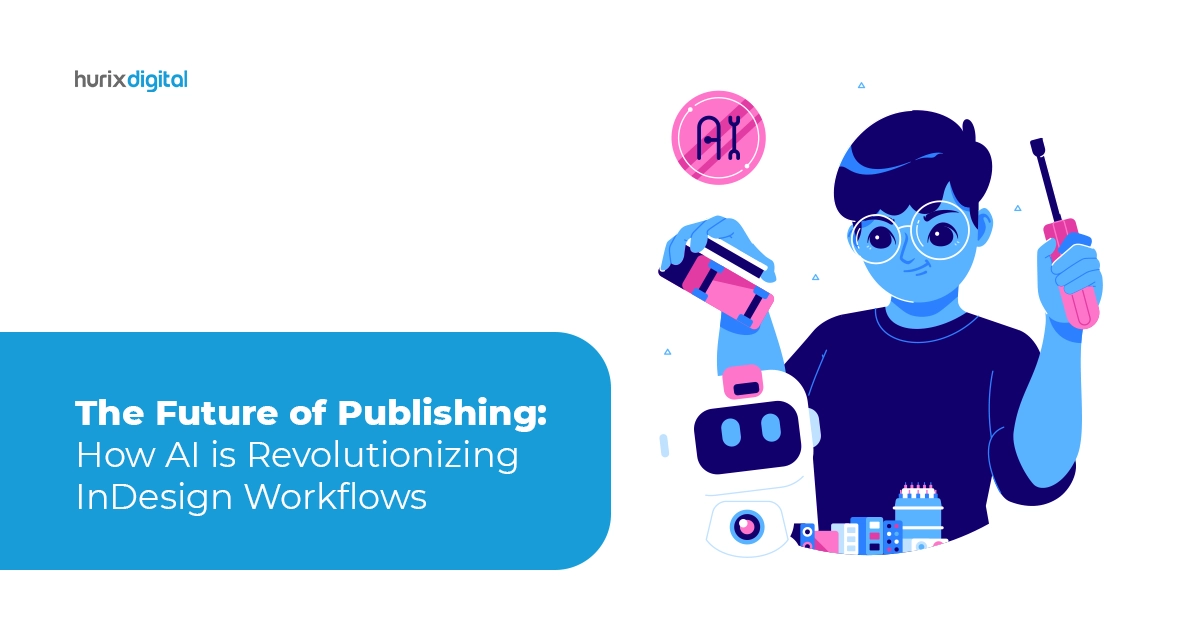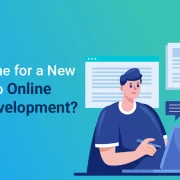
How & Why To Use AI for Employee Training and Development?
Summary
Explore the benefits of using AI for employee training and development, including personalized learning, enhanced engagement, and scalable training solutions.
Staying ahead in the modern workplace needs ongoing learning and upskilling. As technology advances, so must the approaches for developing a trained and adaptive workforce. AI in employee training has emerged as a transformational force, revolutionizing how organizations approach professional development.
Today we dive deeper into how AI’s personalized learning routes cater to individual needs, fostering engagement and skill development. We will also focus on virtual simulations that immerse employees in immersive learning settings, preparing them for real-world difficulties.
Additionally, we will dissect the role of AI in content creation, where algorithms craft dynamic and adaptive materials that resonate with the evolving needs of both learners and organizations.
Join us on this journey through the AI-infused corridors of employee training, where the marriage of technology and education is forging a new era of workforce empowerment and organizational excellence.
Table of Contents:
- How is AI Used for Employee Training?
- What is AI-based Training?
- How is AI Helping in Employment?
- Can AI Create a Training Program?
- Conclusion
How is AI Used for Employee Training?
Exploring the diverse applications of AI in employee training reveals a range of strategies aimed at improving the overall learning experience:
1. Personalized Learning Paths
AI systems meticulously analyze individual employee performance and preferences. AI systems create tailored training programs to fit specific demands, promoting a personalized learning approach.
AI systems also help increase concentration on areas requiring development foster involvement and boost efficiency. Furthermore, artificial intelligence for training programs makes real-time feedback mechanisms a reality which enables quick error correction, which in turn reinforces the learning process.
2. Virtual Simulations
AI-driven corporate training utilizes virtual environments to simulate real-world scenarios. This helps employees engage in hands-on, immersive learning experiences within risk-free virtual settings.
Skill practice and refinement in virtual simulations enhance retention and prepare employees for real-world complexities.
What is AI-based Training?
Exploring the essence of AI-based training reveals a seamless integration of AI technologies throughout the entire training journey:
1. Holistic Integration of AI
AI-based training encompasses the incorporation of artificial intelligence technologies across all training stages. From content creation to delivery and assessment, AI optimizes each step of the training process.
2. Automated Content Creation through NLP
Natural language processing (NLP) algorithms automate the content creation process. Training materials are generated with not only comprehensiveness but also adaptability to individual learning styles.
Also Read: Seven Roles of Artificial Intelligence in Learning and Development
3. Data-Driven Decision Making
AI-based training platforms leverage machine learning algorithms to analyze vast datasets. Identification of trends and skill gaps within the organization allows HR professionals to make informed decisions.
4. Targeted and Aligned Training Initiatives
The data-driven approach ensures that training initiatives are targeted and aligned with organizational strategic goals. This alignment enhances the effectiveness of training programs, addressing specific organizational needs.
How is AI Helping in Employment?
The integration of AI in employee development is a strategic move that seamlessly aligns with the broader goal of enhancing employability.
Here’s how AI-driven tools contribute significantly to various aspects of employment:
1. Continuous Learning and Skill Development
Through AI, employees engage in continuous learning and skill development. Adaptability to evolving role demands is enhanced, fostering a more dynamic and capable workforce.
2. Automation of Repetitive Tasks
AI-driven tools automate repetitive tasks within job responsibilities. This automation frees up valuable time for employees, enabling them to focus on high-value and complex tasks.
3. Streamlining Talent Acquisition
AI plays a pivotal role in streamlining the talent acquisition process. Intelligent algorithms analyze resumes, identify suitable candidates, and conduct initial interviews, expediting the hiring process.
4. Focus on Strategic Recruitment
By automating routine recruitment tasks, AI allows HR professionals to dedicate more time to strategic aspects of recruitment. This strategic focus ensures that the right talent is identified efficiently and aligns with the organization’s goals.
Can AI Create a Training Program?
Exploring the transformative capabilities of AI in designing comprehensive training programs uncovers its nuanced approach and dynamic impact on professional development:
1. Advanced Machine Learning Analysis
AI systems utilize advanced machine learning algorithms to conduct nuanced analyses of existing training materials. Identification of gaps and the creation of new information are executed with surgical accuracy.
2. Efficiency and Flexibility in Content Development
The content development method powered by AI is not only efficient but also highly flexible. Customization of content to individual learning styles and evolving workforce needs is a hallmark of AI-driven training programs.
3. Dynamic Collaboration with Organizational Goals
AI-powered professional development platforms act as dynamic collaborators, seamlessly merging with organizational goals. Automatic real-time adjustments to training materials ensure continual relevance in response to the ever-changing demands of both the workforce and the organization.
4. Adaptability for Dynamic Training Programs
The adaptability of AI guarantees that training programs are dynamic, evolving systems. These programs breathe in tandem with industry trends and organizational strategies, ensuring continual alignment.
Moreover, AI’s role extends beyond content creation. The automated assessment and feedback processes orchestrated by intelligent algorithms redefine the training paradigm. In real-time, AI evaluates employee performance, providing nuanced feedback on strengths and areas for improvement.
This immediate feedback loop not only accelerates the learning curve but also cultivates a culture of continuous improvement, fostering a dynamic and resilient workforce capable of swift adaptation to changing professional landscapes.
Read This Exclusive Whitepaper: AI-Powered Learning – Transforming Employee Training Across Industries
Conclusion
In the era of digital transformation, embracing employee development with AI is not just a strategic choice but a necessity. The fusion of artificial intelligence with training and development programs empowers organizations to create agile, knowledgeable, and high-performing teams.
From personalized learning paths to automated content creation, the applications of AI are diverse and impactful. As the workforce continues to evolve, organizations that harness the potential of AI for employee training will undoubtedly lead the way in fostering innovation and sustained success.
Empower your employees, and embrace the future. Contact Hurix Digital today to explore how our comprehensive suite of future-ready learning content, cloud platforms, content transformation, and technology solutions can elevate your learning initiatives and drive success for your organization.

Performance, Results, Growth, and Life-Long Learning define my professional life. I am passionate about making workplace learning planful, purposeful, and impactful. I take pride in partnering with clients and bringing them the best in learning design and creating solutions that address business challenges.







